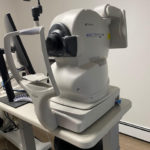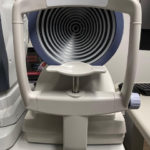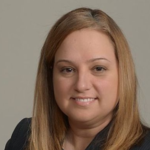
Dr. Sampalis’s new OCT. She says this instrumentation will go a long way toward improving care and boosting profitability.
By Maria Sampalis, OD
April 27, 2022
I always have an eye toward improving care for my patients and profitability for my practice. I am adding two technologies to my practice this year that are moving me significantly closer toward both of those goals. Here a couple important practice investments, including how long I think it will take me to break even and how long to profit.
OCT
My practice’s older demographics, with many patients middle-aged and older, makes an OCT an invaluable patient care tool. I want to be able to help ensure earlier detection of eye disease and offer better outcomes from earlier treatment. I especially value the technology’s ability to facilitate greater precision in diagnosis. For that reason, I added the Maestro2 OCT last year.
Editor’s Note: There are many OCTs to choose from. Click HERE for a list of OCT manufacturers.
Cost: $40,000
To Acquire It: Purchased outright
Break-Even Point: Reimbursement is around $40 for use of the OCT and $80 for photos. My practice’s 1,000+ glaucoma suspects alone paid for it. We paid it off in three months just on OCT use and photos. So, I almost made a profit on this investment right away.
Impact on Patient Experience & Practice Branding: My patients are amazed that we have this advanced technology in our office. Many have never seen an OCT before. When we explain how use of this instrument will help us better detect sight-threatening conditions, and can even sometimes give a sense of a patient’s systemic health by showing the condition of the back of their eyes, they are grateful. This kind of advanced care reinforces that coming to our office for their eye exam was a smart decision.
OCTs are expensive, but if your practice provides significant medical eyecare, and especially if you have an older patient base, it quickly pays for itself and adds to your sense of security that you are providing the highest level of care while substantially building profitability.
Topographer
A topographer can help an OD better manage dry eye and provide specialty contact lens services and myopia management. As those are areas of my practice that I want to build up, I decided to invest in the CA-800 Topographer.
Editor’s Note: There are many topographers to choose from. Click HERE for list of topographer manufacturers.
The ability of the technology to provide in-depth imaging of the meibomian glands will help me better detect dry eye. I will be able to manage even severe dry eye cases in my practice, rather than referring out, and can even become a place other ODs and healthcare practitioners refer their dry eye patients. The technology also will enable me to better care for specialty contact lens patients with abnormal corneas, rather than referring those patients to an optometrist or ophthalmologist with a specialty contact lens focus.
Cost: Less than $10,000
To Acquire It: Purchased outright

The topographer Dr. Sampalis recently added to her practice. She says this instrument will help build her Ortho-K and specialty contact lens services, in addition to helping her manage patients with severe dry eye.
Break-Even Point: This instrument will take longer for me to break even and make a profit from than the OCT, as it will be used on fewer patients. Even so, I expect that six months to one year after purchase, the investment will be paid for, and we will begin to profit from it. I can use it to prescribe and educate patients about the need for dry eye treatments and specialty contact lenses. The technology provides the kind of images that help me explain to patients why costly treatments or contact lenses are well worth it to improve their eye health, vision and quality of life. I also will use it to provide Ortho-K services.
Impact on Patient Experience & Practice Branding: Dry eye is becoming more prevalent, with the most up-to-date OD practices offering diagnosis and treatments in-house to address this condition. When you have instrumentation that allows you to show patients the cause behind their discomfort, you can more easily successfully encourage them to fulfill the treatment plan you prescribed.
Specialty contact lenses also are a growth area in optometry. Many optometrists still don’t offer specialty contact lens services in-house. If I am able to do that, I can create a practice-differentiator. It will be yet another way my patients will see that my practice is more on the cutting edge of care than nearby competitors.
The Ortho-K services I am building will also be furthered with this instrument. Ortho-K is hard to do without a topographer, so if I want to get into this new specialty area, this technology is essential.
Other Articles to Explore
Dry eye treatments, specialty contact lenses and Ortho-K services are frequently out-of-pocket for the patient, allowing me to create revenue streams that are not hampered by low managed-care reimbursements. That goes a long way toward helping me both care for patients and ensure growing profitability.
As independent optometrists, practice investments that make up for low insurance reimbursements, and greater competition from online eyewear retailers, are essential to our long-term survival and prosperity.
 Maria Sampalis, OD, is the owner of Sampalis Eye Care in Warwick R.I. and sublease at Warby Parker. She is also the founder of Corporate Optometry on Facebook. Dr. Sampalis is also founder of the job site, corporateoptometrycareers.com. She is available for practice management consulting. To contact: msampalis@hotmail.com
Maria Sampalis, OD, is the owner of Sampalis Eye Care in Warwick R.I. and sublease at Warby Parker. She is also the founder of Corporate Optometry on Facebook. Dr. Sampalis is also founder of the job site, corporateoptometrycareers.com. She is available for practice management consulting. To contact: msampalis@hotmail.com





















